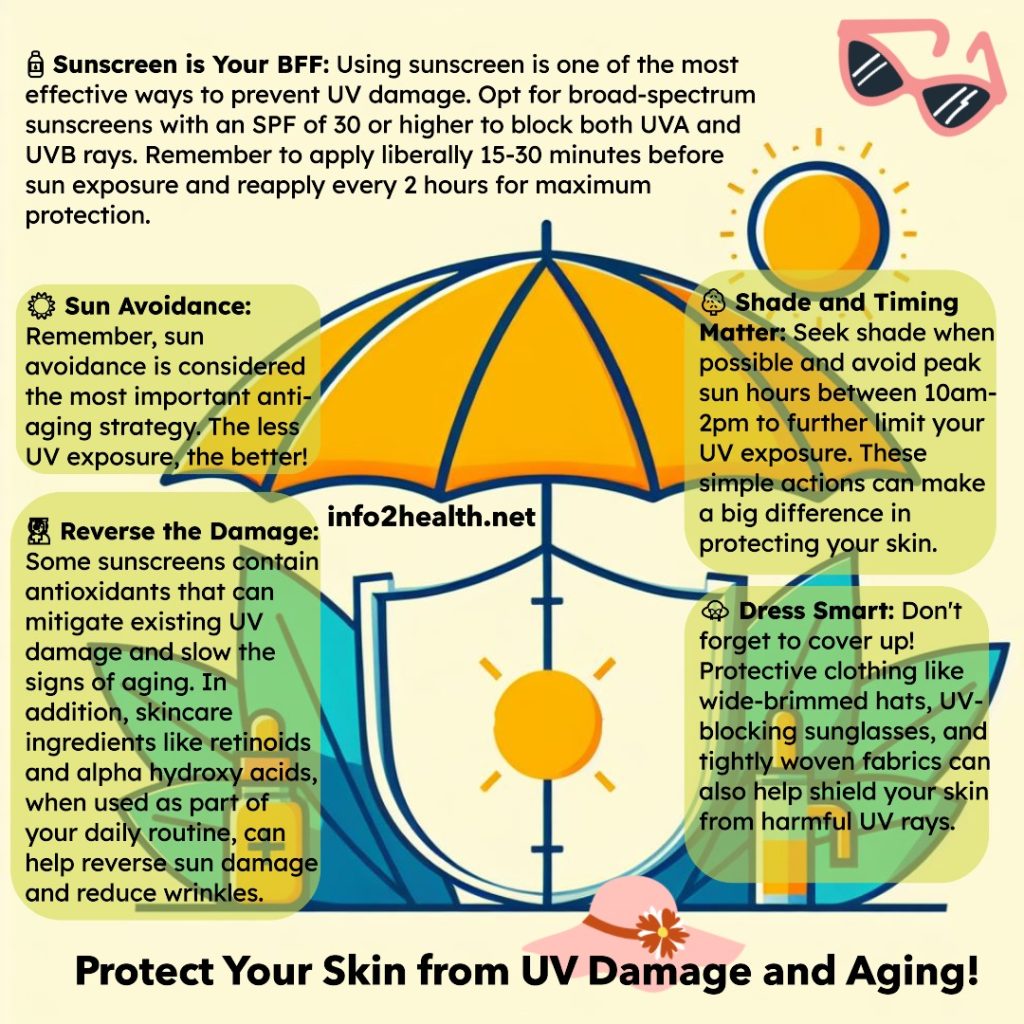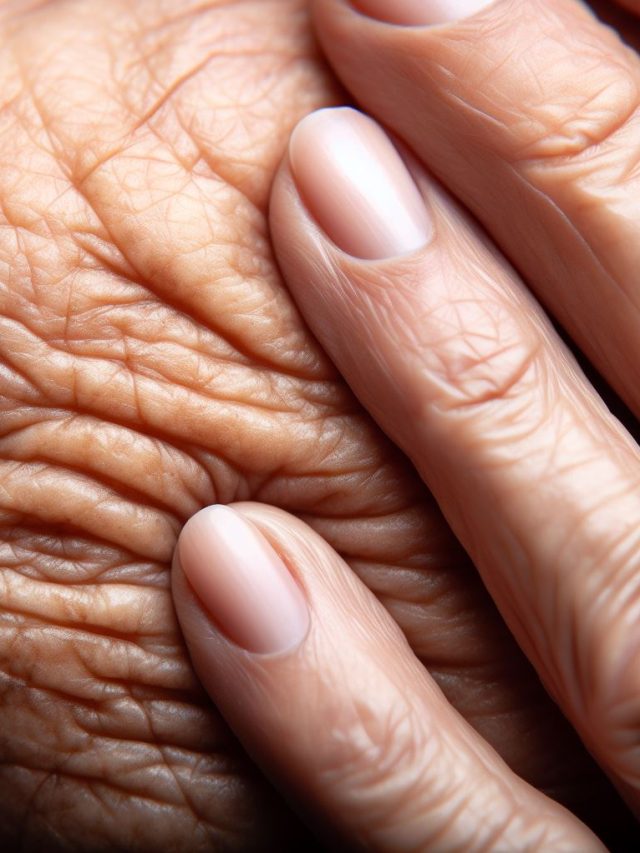The Importance of Sun Protection for Anti-Aging
Sun exposure is the primary contributor to skin aging1, responsible for up to 90% of visible aging signs due to the damaging effects of UV rays2. Although some sun exposure is essential for vitamin D production, overexposure can lead to unwelcome consequences like wrinkles, age spots, loss of skin elasticity, and even skin cancer. Proper sun protection is crucial for maintaining youthful and healthy skin as you age. In this article, we will explore how sun protection combats aging and provide tips for safe sun exposure.
How Sun Exposure Ages Skin
There are two types of harmful ultraviolet (UV) rays that harm the skin: UVA and UVB. UVA rays infiltrate the deeper layers of the dermis, breaking down collagen and elastin, which are responsible for skin’s structural support and elasticity. This breakdown leads to the development of wrinkles and sagging. On the other hand, UVB rays affect the skin’s surface, causing sunburn, precancerous changes, and potentially skin cancer. Both types of rays also generate free radicals, unstable molecules that damage the DNA of skin cells. Over time, the accumulation of this damage accelerates the visible signs of aging.
By being vigilant about sun protection, you can limit this photodamage from UV exposure. Here’s how proper sun care preserves youthful skin:
- Prevents further wrinkles and age spots: Sun exposure triggers the production of melanin, leading to pigmentation and age spots. Continuous UV damage breaks down collagen, so strategic sun avoidance helps maintain smoother, more even-toned skin.
- Protects against skin cancer: Cumulative sun exposure can cause genetic mutations that may lead to skin cancer, with UVA rays, in particular, penetrating deep and being associated with melanoma. Regular sunscreen use helps block cancer-causing UV damage.
- Maintains elasticity: Collagen and elastin are crucial for keeping skin taut and supple. When UV exposure unravels the bonds holding them together, skin loses elasticity and sags. Sun protection preserves these supportive proteins.
- Reduces inflammation: UV light triggers inflammation, exacerbating conditions like eczema and rosacea. Sun avoidance helps sensitive skin remain calm and comfortable.
Regular Broad-Spectrum Sunscreen
The number one tip for anti-aging sun protection is applying a daily broad-spectrum sunscreen. In the morning, use approximately 1 ounce (equivalent to a shot glass) of SPF 30 or higher sunscreen on all exposed skin. Reapply every two hours of sun exposure, as well as after swimming or sweating. Choose a broad-spectrum formula that effectively blocks both UVA and UVB rays. For water-related activities, opt for a water-resistant sunscreen.
Seek Shade and Cover Up
Whenever possible, minimize direct sun exposure by seeking shade under trees, umbrellas, or awnings. Wear wide-brimmed hats, long-sleeved shirts, and pants when spending extended time outdoors. Fabrics that are tightly woven and darker in color offer greater UV protection. There are also new high-tech clothing lines designed with built-in UV-blocking technology.
Watch the Clock
Try to avoid being outdoors during the peak sun hours between 10 am and 4 pm when UV rays are at their strongest. Plan outdoor activities for earlier mornings or later evenings when the sun is lower in the sky, reducing UV exposure and decreasing the risk of skin cancer. Utilize the UV index forecast in your weather app to plan for periods of less intense sun.
Don’t Forget the Lips and Eyes
The thin, sensitive skin on your lips and around the eyes is prone to sun damage and cancers. Protect your lips by applying a lip balm or lipstick with SPF protection. Shield the delicate undereye area with oversized sunglasses that provide ample coverage. Wide-brimmed hats can also create shade over the eyes and cheeks.
Reverse Sun Damage and Reduce Wrinkles
While sun protection is the most effective anti-aging strategy, there are also potent skincare ingredients that can help reverse existing sun damage and reduce wrinkles. Retinoids (such as tretinoin and retinol) boost collagen production and increase cell turnover to smooth fine lines3. Alpha hydroxy acids (AHAs) like glycolic and lactic acid exfoliate the surface layers of skin, diminishing uneven pigmentation and improving skin tone and texture4. Incorporating retinoids and AHAs into your nightly routine complements your daily sun protection efforts for more youthful, vibrant skin.
Conclusion
Unprotected sun exposure throughout your lifetime has a cumulative effect, hastening visible signs of aging. Adhering to intelligent sun protection habits can help maintain your skin’s youthful radiance and vitality over time. The small investment of using sunscreen and cover-ups pays off in the long run with healthier, younger-looking skin. Protect your skin now, and it will express its gratitude in the future.

